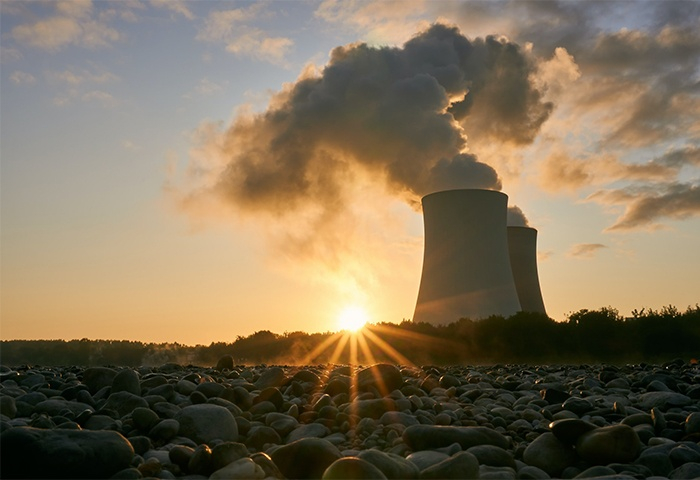COVID-19 has thrown the world into unchartered territory – the sudden impact of the pandemic ushers the tendency to prioritize present day challenges over future ones. But we have the opportunity to recover stronger if we have the courage to envision a future that works towards building a safer, healthier, and cleaner future.
We have made little progress towards reducing emissions that cause global warming over the past few decades. The significant but temporary emission reductions due to the COVID-19 lockdown will not affect the trajectory we are on. It is estimated that we are well on our way to a globe that will be over 3 degrees Celsius hotter, which would mean irreversible and catastrophic consequences.
In recent times, oil giants have touted new climate plans, claiming that by 2050 they will take as much carbon dioxide out of the atmosphere as they put in. Can we trust big oil companies who claim that they are aiming for “net-zero” carbon emissions? A new report reveals that many of these emissions targets aren’t as ambitious as they appear.
Similarly, China’s Xi Jinping recently promised the country would be carbon neutral by 2060. Since the country is responsible for over a quarter of the world's greenhouse gas emissions linked to global warming, these claims need to be taken with a grain of salt. Although it is one of the worst polluters, China is also the biggest global investor in renewable energy – a country whose energy policy points both ways.
Oil and gas majors undermining climate goals
A new analysis carried out by Oil Change throws shade on oil companies' climate promises. It finds that oil and gas giants are far from aligning with the global climate change goals they purport to uphold, and only a government-managed decline of the sector can prevent climate catastrophe.
"We have seen a wave of announcements from oil companies over the last nine months claiming to be part of the solution on climate, but none of their plans measure up to what is needed," said co-author Kelly Trout, a senior research analyst at Oil Change.
Oil majors have touted measures such as reducing the carbon intensity of their products, transitioning into renewable energy, storing "captured" CO2 underground, and offsetting emissions through reforestation. The report stacked up the climate commitments of eight oil and gas companies against the Paris climate goal of curbing global warming at 1.5 degrees Celsius above pre-industrial levels. Under the 2015 treaty, nations are enjoined to cap the planet's average rise in temperature at "well below" 2C, and 1.5C if feasible.
A subsequent report from the UN's IPCC climate science panel showed 1.5C to be the safer limit by far, and laid out scenarios for achieving that goal by slashing or sequestering greenhouse gas emissions. The IPCC has calculated that the additional release of more than 500 billion tonnes of CO2 into the atmosphere would push temperatures above the 1.5C threshold. If global CO2 emissions continue at the recent level of about 40 billion tonnes a year, this "carbon budget" would be used up in less than a decade and a half. BP, Chevron, Eni, Equinor, ExxonMobil, Repsol, Shell and Total, all based in Europe or the United States, have to varying degrees laid out strategies they say are compatible with the Paris targets.
Using the 1.5C threshold as a benchmark, the report graded 10 components of each company's climate plan along the spectrum of "fully aligned" to "grossly insufficient". Pledges to stop approving new extraction projects, for example, were judged "grossly inefficient" in all eight oil giants. The same failing mark was given across the board for committing to a date to end oil and gas extraction; being "honest" about the high carbon content of gas; and, with the exception of BP, promising to stop exploration.
Even if global use of coal, which powers 40 percent of electricity generation worldwide, were phased out overnight, developed gas and oil reserves would still push the world beyond the 1.5C threshold, earlier research has shown. "The only reason that big oil companies have started to change their tune on climate is that they saw they were at risk of losing their social license as millions of people join climate strikes around the world," said Trout. Investors and public finance institutions have likewise started to pull back from fossil fuels, though coal has by far taken the biggest hit.
The report, entitled "Big Oil: Reality Check", also slams the publically traded firms for relying on hard-to-measure reforestation and embryonic CO2 storage schemes to offset emissions from their products. In the end, only governments can ensure the managed decline of fossil fuel-based energy, the report concluded. "We cannot depend on the same companies that got us into this crisis to get us out of it – we see a need for governments to step in," Trout said. "An arsonist pledging to light a few less fires is still an arsonist."
China: Carbon neutral by 2060
In an unexpected pledge, Xi told the UN on Tuesday China would "strive to peak carbon emissions before 2030 and achieve carbon neutrality by 2060." It is the first time China has announced any plans to become carbon neutral but Xi did not say how he will tip the balance from a country whose growth is fed by fossil fuels.
His statement leaves "plenty of room for different readings," said Lauri Myllyvirta, China analyst at Centre for Research on Energy and Clean Air. "The worst case is there's still another decade... to build more fossil fuel infrastructure and increase emissions," he said.
Coal has powered China's phenomenal economic rise. Annual coal consumption nearly quadrupled between 1990 and 2015, providing 70 percent of China's energy over that period. China's leaders have tried to dilute the nation's dependency on coal, and it now makes up less than 60 percent of the energy mix. But with China's economy still growing, the total amount of coal burnt continues to grow.
Approvals for coal energy projects have also accelerated this year as local authorities try to kickstart virus-hit economies. Local governments approved 23 gigawatts worth of new coal power projects in the first half of 2020, more than the previous two years combined, according to Global Energy Monitor (GEM), a San Francisco-based environmental NGO. The International Energy Authority says China has no need for new coal-fired plants because the price of a unit of wind or solar power is now comparable to that of coal.
China is the world's biggest investor in renewable energy, yet non fossil-fuels only account for about 15 percent of the nation's energy consumption. Wind and solar only made up a combined 7.7 percent of China's national power generation in 2018, according to Kevin Tu, a researcher at the Center on Global Energy Policy at Columbia University. Nuclear forms another large chunk of the non-fossil fuel mix. Investments in new wind and solar installations have also declined over the past 18 months.
Planned solar power installations this year are nearly half that of 2019, according to the country's central economics planner. Its huge renewable ambitions have also been hampered by logistical and geographical problems. China's biggest wind producing area, the far northwest region of Xinjiang, cancelled 31 projects in the first half of this year due to "overcapacity and inability to connect to grid," the local government said.
Chinese coal companies have also been on a building spree overseas as part of the Belt and Road Initiative (BRI) – a trillion-dollar push to build infrastructure projects and extend strategic influence across the globe. Beijing has invested over $50 billion in nearly 240 coal projects in 25 countries, including in Bangladesh, Pakistan, Serbia, Kenya, Ghana, Malawi, and Zimbabwe, data from Endcoal, an environmental NGO showed. That may effectively hollow out any domestic efforts at emission-busting. The BRI "threatens to lock China's partners into the high-emissions development that China is trying to exit," said Tom Baxter, an analyst for environmental NGO China Dialogue.
"With China having the world's largest renewable energy industry, investment budget and industrial base, this is eminently achievable," Myllyvirta said. But whether China's leaders have the political will to revolutionize the economy is not yet known. Some of those answers should come next year when China releases its next five-year economic plan. These are the traditional foundations of the country’s economic policies.
Li Shuo, senior climate and energy officer at Greenpeace China, warns that there is a lot left to be done. "The goal requires unprecedented investments in energy efficiency, a better carbon trading system and weaning the economy from fossil fuels," Li said. "Right now this goal feels like a bit of science fiction."
The momentum for climate action has been building up for decades, but so far, progress has been disappointing. With the outbreak of the COVID-19 pandemic, the global landscape experienced a momentous shift. The pandemic has sharpened awareness about vulnerabilities and changed perceptions about long-term risks, and it has driven home the message that good decision-making must be informed by science. The pandemic gives us an opportunity to make a fresh start and to prepare better for the next crisis.









